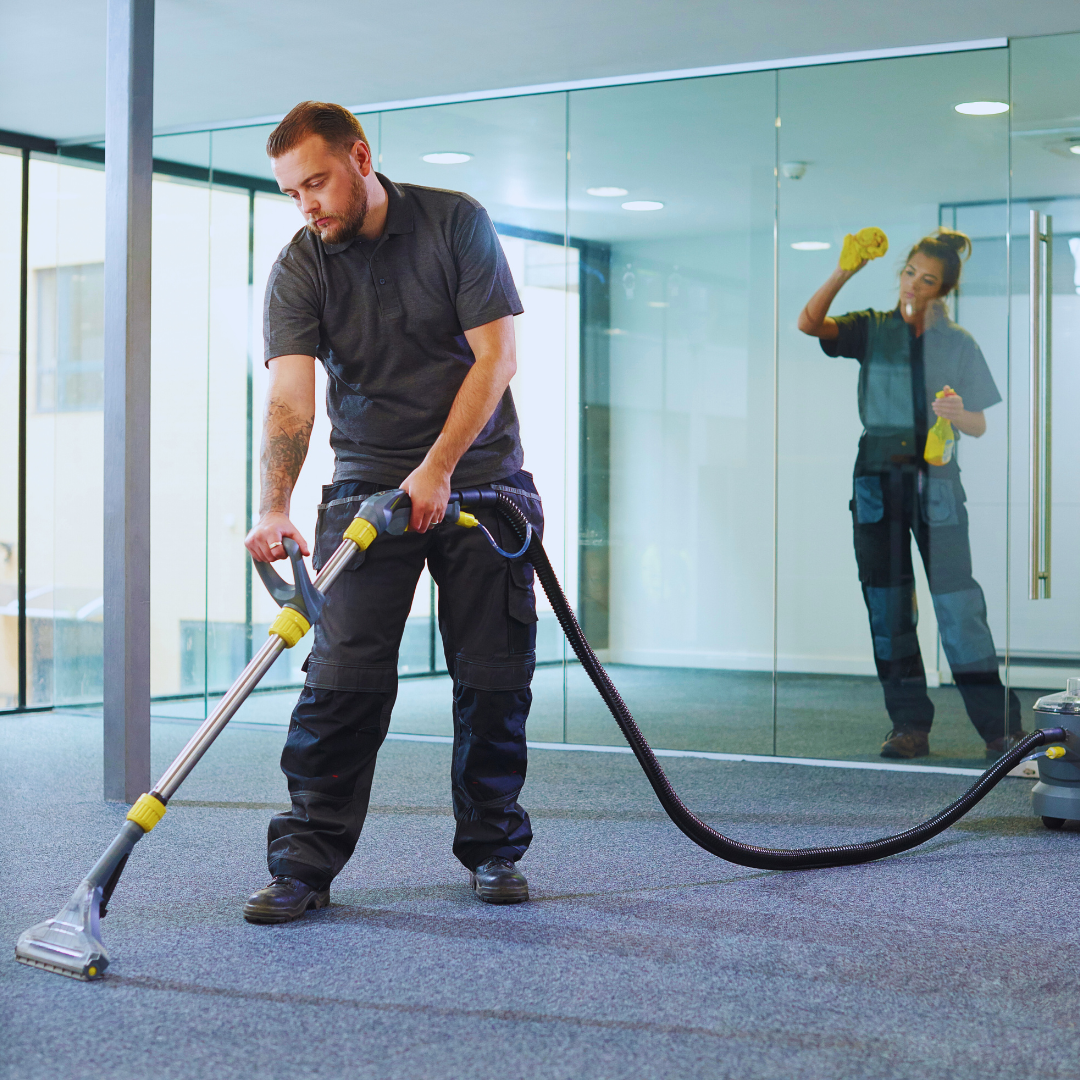Deep cleaning a home can seem like a daunting task, but with the right approach and techniques, it becomes manageable. To deep clean effectively, one must focus on thoroughness and organization, ensuring that every corner of the home receives attention. This process not only removes dirt and grime but also creates a healthier living environment.
Incorporating practical cleaning tips can make the deep cleaning experience more efficient. Establishing a checklist for each room will streamline tasks and keep one motivated. From kitchens to bathrooms, deep cleaning involves specific methods to tackle tough areas, ensuring a comprehensive clean.
This guide will provide step-by-step instructions and expert advice on how to deep clean different spaces in the home. By following these techniques, anyone can transform their living space into a fresh, inviting sanctuary.
Preparing Your Home for Deep Cleaning
Before starting the deep cleaning process, it is essential to create an organized and clutter-free environment. This involves decluttering each room and gathering the necessary cleaning supplies. Taking these steps ensures a more effective and efficient cleaning session.
Decluttering and Organizing
Decluttering is the first step in preparing for deep cleaning. It involves removing unnecessary items that have accumulated over time. Start by moving through each room and sorting items into categories: keep, donate, and discard. This simplifies the process and makes it easier to see what needs cleaning.
A few tips for decluttering include:
- Set a Timer: Allocate specific time blocks for each room.
- Use Bins: Employ bins to sort items quickly.
- Focus on One Area: Tackle one section at a time to avoid feeling overwhelmed.
Once the decluttering is complete, organizing should follow. Utilize storage solutions such as bins, shelves, and labels. This creates a streamlined environment that enhances the efficiency of the deep cleaning process.
Gathering Cleaning Supplies
Having the right cleaning supplies is crucial for a successful deep cleaning. Begin by assembling the essentials needed for various surfaces. Common items to include are:
- All-purpose cleaner
- Glass cleaner
- Vinegar and baking soda for natural cleaning methods
- Microfiber cloths
- Sponges
- Cleaning gloves
Ensure to check for any additional tools that may be necessary, such as a mop, vacuum, or brushes. A checklist can help keep track of materials needed, ensuring everything is on hand when the cleaning begins. Proper preparation reduces time spent searching for items during the task, creating a smoother cleaning experience.
The Deep Cleaning Process
Deep cleaning involves a systematic approach to ensure all areas of the home receive attention. It includes dusting, window cleaning, kitchen sanitation, bathroom scrubbing, and floor care.
Dusting and Cleaning Surfaces
Begin by dusting high to low. He should start with ceiling corners and work down to furniture surfaces. Use a microfiber cloth to trap dust effectively. Don’t forget to clean HVAC vent covers, light fixtures, and any decorative items. For frames and shelves, dust them with a damp cloth to avoid spreading dust around. A vacuum with an attachment can help reach tight spots. Following dusting, wipe surfaces with an appropriate cleaning solution to remove any remaining grime.
Windows and Window Treatments
Cleaning windows enhances natural light and overall aesthetics. First, gather supplies like a squeegee, bucket, and rubbing alcohol mixed with water. Begin by removing dust and dirt from window frames. Use a cloth to wipe down the frames before applying the cleaning solution.
For the glass, start at the top and work your way down. Wipe with a squeegee for a streak-free finish. Window treatments, such as blinds and curtains, require specific care. Dust blinds with a microfiber cloth and wash fabric curtains as per label instructions.
It is important to understand that everyone might not have the time required for such cleaning tasks. In such cases, you can consider getting help from a professional window cleaner. These experts usually have the knowledge of different cleaning techniques and can make your window look brand new. That way you can get sparkling windows even if you lack time, all without having to worry about the cleaning process.
Kitchen and Appliances
Focus on the kitchen, as it requires thorough cleaning. Start with countertop surfaces, using a sanitizer that is safe for food areas. He should pay special attention to small appliances and often-overlooked areas. Clean the garbage disposal by grinding ice and citrus peels.
For the oven, an oven cleaner can tackle baked-on spills effectively. Ensure all appliances are unplugged when cleaning. Don’t overlook floors; mop tile or laminate floors while following the manufacturer’s recommendations. For tougher grime, use a dedicated kitchen cleaner.
Bathrooms
Bathrooms harbor germs, so thorough cleaning is crucial. Start with the toilet bowl using a toilet bowl cleaner, ensuring to scrub thoroughly. Apply a bathroom cleaner to sinks, countertops, and tubs. Allow it to sit for several minutes to break down soap scum and stains. For the tiles in your bathroom, it’s a good idea to contact a tile cleaning company that can offer specialized deep-cleaning for the cracks that you can’t get properly by yourself.
Grout often collects grime, so using a specialized grout cleaner can restore its appearance. Scrub with a brush for effective results. Wipe surfaces down with a disinfecting cloth afterward to kill remaining germs. Finally, review the mirrors with glass cleaner for a brilliant shine.
Floors and Carpets
Cleaning floors requires different approaches based on the material. For hard surfaces, vacuum first to remove debris, then mop using the appropriate cleaner. They should follow the manufacturer’s guidelines when selecting a cleaning solution. Pay attention to corners where dirt tends to accumulate.
For carpets, vacuum thoroughly to remove dust and allergens. Spot treat stains with a carpet cleaner, following the product instructions for the best results. Deep cleaning carpets might require a carpet cleaner machine for thorough extraction. In case the carpet needs a more intensive cleaning or there’s a lack of required equipements, homeowners can contact professionals who offer carpet cleaning Elgin (or elsewhere). Proper care can ensure carpets remain fresh for longer periods.
Maintaining Cleanliness
Maintaining a clean home requires consistent effort and attention to specific areas to ensure cleanliness is upheld throughout the year. Implementing a cleaning schedule and knowing how to handle specialized items can make this process efficient.
Developing a Cleaning Schedule
Creating a cleaning schedule helps prioritize tasks and divide them across manageable time frames. A weekly or bi-weekly schedule can include daily tasks such as wiping down surfaces, vacuuming high-traffic areas, and dusting ceiling fans.
Example Weekly Cleaning Schedule:
| Day | Task |
| Monday | Clean bathrooms |
| Tuesday | Vacuum carpets and mop floors |
| Wednesday | Wash bedding and towels |
| Thursday | Clean kitchen appliances |
| Friday | Clean kitchen appliances |
| Saturday | Organize and declutter |
| Sunday | Deep clean a specified area |
Incorporating seasonal cleaning, such as spring cleaning, ensures that areas like air vents receive attention. Regular laundering of curtains and cleaning light fixtures keeps the home feeling fresh.
Handling Specialized Items
Specialized items in a home require specific cleaning methods to maintain their integrity. For example, ceiling fans should be cleaned using a microfiber cloth or a ceiling fan duster to remove dust without scattering it. When cleaning air vents, using a vacuum attachment can help remove dust buildup effectively. If washing fabrics like curtains or upholstery, choosing the appropriate laundry detergent will prevent damage.
For delicate items, referencing manufacturer instructions for cleaning products and methods is crucial. Regular attention to these specialized items helps maintain the overall cleanliness and longevity of household items.
Considerations for Selling Your Home
Selling a home requires attention to detail, especially regarding cleanliness. A clean home attracts buyers and can lead to higher offers.
Key Cleaning Areas:
- Kitchens: Ensure counters and appliances are spotless. Focus on deep cleaning areas like ovens and refrigerators.
- Bathrooms: Scrub tiles, sinks, and toilets. A fresh scent can enhance the appeal.
- Living Areas: Dust surfaces and vacuum carpets. Consider removing any clutter to create a spacious feel.
Engaging in a cleaning service can be beneficial. Professionals can provide thorough cleaning and tackle jobs that might be overlooked. This investment in cleanliness can make the home more appealing.
Additionally, these professionals might also be able to offer roof, gutter and solar panel cleaning to ensure the cleanliness of the exterior of the home. This can ensure that the home looks well tended from the outside, which can be just as important as the interior cleanliness.
When preparing for showings, ensure the home is well-lit and free of personal items. This allows potential buyers to envision their own lives in the space.
Additional Tips:
- Declutter: Store unnecessary items away. This helps to showcase storage space.
- Odor Management: Utilize air fresheners or baking soda to neutralize unpleasant smells.
- Curb Appeal: Maintain yard and entrance cleanliness to create a positive first impression.
A clean home can significantly impact the selling process. It reflects care and responsibility, qualities buyers look for in a potential purchase.

